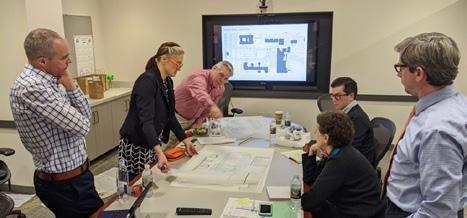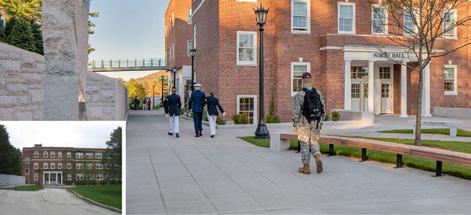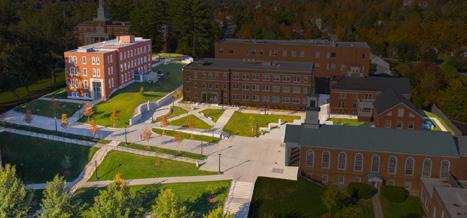Revitalizing an Historic Campus Core
How do you reimagine central campus resources for contemporary research, teaching, learning, and student life without compromising the integrity of its historic character?

EXECUTIVE SUMMARY
All campuses face aging core academic facilities, often housed in important historic buildings at the heart of campus. These buildings typically come with a long list of needs like supporting modern programs, addressing deferred maintenance, code compliance and accessibility. But topping the list, always, is the need to maintain historic character and the distinct sense of place these buildings impart.
Founded in 1819, Norwich University is the oldest private military college in the United States. In the mid 1990’s, Norwich University acquired Vermont College and now combines its robust military history with a civilian student population. The central campus revitalization was the anchor project of Norwich’s 200th anniversary capital campaign. Freeman French Freeman, Architects worked with Jones as the architect-of-record.
Flanked by campus landmarks such as the Upper Parade Ground, White Chapel, and the Wise Campus Center, this central area of campus is comprised of three buildings: Ainsworth (1910), Webb (1960; now called Schneider), and
Dewey (1902) Hall. They were dated and tired, did not serve their constituents well, were plagued by deferred maintenance, and yet remained vital contributors to academic life given their central location and historic character.
A yearlong planning and programming effort resulted in a $45 million project in which Jones undertook renovations to the three buildings, the addition of a new building, and major site infrastructure improvements to knit all of these new and old buildings together in a way that is meaningful and memorable.
JONES ROADMAP





Listen to the building(s) – what are the bones telling you it should be; what is its best use?
It’s ok to have buildings that aren’t ‘owned’ by Colleges or a School; rethink what needs to be dedicated to a College; and what can be shared.
Pay close attention to exterior spaces – landscape is the first impression potential students have of the place in which they will spend some of their most formative years; later, their nostalgia of the campus will be critical for engaging as alumni.
Show your work – Projects that involve historic buildings are extremely sensitive. Listen to trustees, alumnae, students, citizens and donors. Gain support with strong analysis and presentation materials shared through lots of town hall meetings, lunchtime pin-ups, slide shows, and animations.
Partner with experts – leverage local historical resources and campus experts.
Start talking about logistics from day one – plan phasing and implementation strategies early to keep the campus up and running.
REVITALIZING AT DIFFERENT SCALES
Adhering to Guidelines. Of smaller scale but no less grand on challenges, we have worked with schools such as MIT (since 2013), Northeastern University (since 2013), and Harvard University (since 2015) whose historic campus cores have strict guidelines and oversight that require carefully considered responses. With our work at Cape Cod Community College and Massasoit Community College, we developed solutions that cleave to the different character of these two mid-century campuses.
“IF YOU SURVIVE LONG ENOUGH, YOU'RE REVERED - RATHER LIKE AN OLD BUILDING.”
— KATHARINE HEPBURN
An Arc of History.
When working in a historic campus building, or precinct, we picture ourselves on an arc of history. We are just one moment in the life of this campus, a perspective that requires both humility and pragmatism. Revere the historic building but do not be beholden to it. Make it function for today’s learning enterprise: sustainable, inclusive and energy efficient. Keep it as familiar to returning alumni as it is welcoming to current and prospective students.
Balancing these competing forces with respect, thoughtfulness, and innovation is how we preserve the legacy of a historic campus core, making it as relevant for the future as it was the day it was built.
